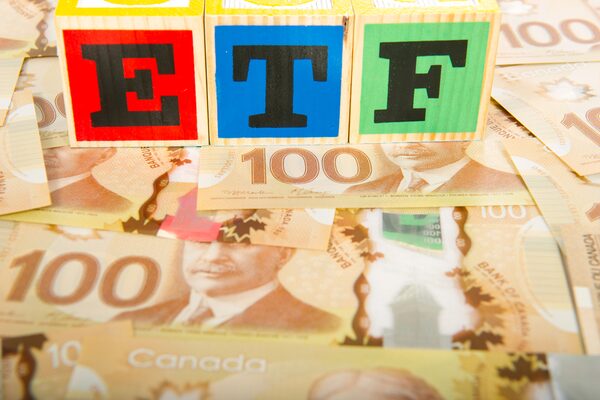
iStockPhoto / Getty Images
Everyone knows that a truly diversified portfolio needs bonds. But there’s a catch: bonds often come with a large minimum investment requirement. Luckily, there’s a way to get around that. Put your money into fixed-income exchange-traded funds (ETFs), also called bond ETFs.
“Bond ETFs provide investors access to a broader set of bonds often at a significantly lower cost than bond funds,” says Andrew Clee, vice president of ETFs at Fidelity Investments Canada.
They also offer investors a lot more choice and diversification, from owning sovereign bonds – such as federal or provincial government bonds – to investment-grade corporate bonds and high-yield options with lower credit ratings.
With market volatility increasing, and with a potential economic slowdown on the horizon, many advisors are looking more closely at bonds as a way to protect client portfolios from a market downturn. As well, with interest rates falling – over the last year, 10-year U.S. Treasury yields have dropped to 1.8 per cent from 3.2 per cent – bond prices are rising. Since October, 2018, the S&P U.S. Treasury Bond Index has climbed by 9 per cent.
Bond ETFs allow advisors to add uncorrelated assets to equities into a portfolio quickly and efficiently.
“By having the negative correlation and diversification benefit, bond ETFs offer investors a smoother ride on their investment journey,” says Clee, noting that at times of market meltdowns, pure equity portfolios will experience considerably larger losses than a balanced portfolio with 50 per cent fixed income mandates, because bond prices have historically appreciated when equities are falling, thereby offsetting steeper declines.
Here’s how these ETFs can help you mitigate risk in your portfolio.
How bonds ETFs work
Fixed-income, or bond, ETFs are a basket of frequently traded, or liquid, securities that can be made up of many types of fixed income securities, including U.S. Treasury bonds, mortgage-backed bonds, municipal bonds, corporate bonds, high-yield or junk bonds, international bonds, inflation-protected bonds and bonds with varying maturities.
They can also focus on different regional exposures, such as Canadian bonds or U.S. bonds, or have a global focus. In addition, they might centre around one asset class in the fixed income space, such as Canadian corporate bonds or different maturities like short-term Canadian bonds.
Fidelity’s Systematic High Yield ETF, for example, is an actively managed ETF that invests nearly 80 per cent of the fund’s assets in globally diverse corporate debt that is regarded as below investment grade, and hence generates a high yield. As an investment vehicle it may be particularly attractive for investors with a higher risk tolerance who want to generate more income.
Bond ETFs work, because they can easily balance out a person’s portfolio. In fact, balanced funds – funds with stocks and bonds – have historically provided strong returns without as many ups and downs, says Clee.
“If you look at the returns since January, there’s been some significant volatility in the equity markets, yet bonds are up about 7 per cent to 8 per cent,” he says. “Thus in times of stress, bond ETFs can provide that buffer in your portfolio.”
Passive versus active
Like equity ETFs, bond funds can be classified into passive and active. When looking at the split, nearly 75 per cent of fixed income ETFs fall into the passive space, which tracks debt-weighted indices. In essence, the issuer with the most outstanding debt such as governments receive the largest weight in the ETF.
For example, currently, about 70 per cent of the assets in passive Canadian bond ETFs are allocated federal and provincial bonds, in part because governments have been selling bonds at a rapid rate.
“They’ve been issuing a tremendous amount of bonds to fund the deficits that they’ve been running,” explains Clee.
Similarly, corporate issuers are taking advantage of low interest rates to issue longer-term bonds, but only represent near 30 per cent of a passive Canadian Bond ETFs assets.
“In passive ETFs, there is no consideration for portfolio diversification, risk tolerance and return targets, which is why we have seen tremendous growth in the active fixed ETF space,” argues Clee, noting that a passive ETF that tracks fixed income is entirely driven by issuance patterns, and hence the large allocation to government bonds.
With active bond ETFs, though, a portfolio manager strategically balances the safety of government bonds with the higher credit risk of corporate bonds, generating greater yield than a passive bond ETF, without detracting from the fund’s risk-return proposition, he says.
Think of it like a bond mutual fund, but with the low cost, high transparency and tax efficiency of ETFs.
Lower costs
Bond ETFs are inexpensive, though they’re not as cheap as standard Canadian equity ETFs because “bonds trade over the counter and operationally require a little bit more work compared to equity mandates,” Clee notes.
However, the price gap has been closing with bond ETF prices falling steadily over the last five years. In fact, Clee says, Fidelity now offers a short-term corporate Canadian bond mandate that is actively managed at an expense ratio of 40 basis points, significantly lower than many comparable bond mutual funds.
As falling interest rates, faltering global growth and growing trade tensions make markets swing wildly, there has never been a better time to consider adding fixed-income ETFs to your investment portfolio. Not only are they a cost-effective way to cushion against market declines, providing downside protection, but they also serve as a diversification tool designed to offer high-yield and price-appreciation potential.
Advertising feature produced by Globe Content Studio. The Globe’s editorial department was not involved.